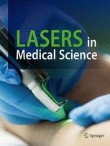
Medicine by Alexandros G. Sfakianakis,Anapafseos 5 Agios Nikolaos 72100 Crete Greece,00302841026182,00306932607174,alsfakia@gmail.com,
Πληροφορίες
Ετικέτες
Εγγραφή σε:
Σχόλια ανάρτησης (Atom)
Αρχειοθήκη ιστολογίου
-
►
2023
(276)
- ► Φεβρουαρίου (133)
- ► Ιανουαρίου (143)
-
►
2022
(1976)
- ► Δεκεμβρίου (116)
- ► Σεπτεμβρίου (158)
- ► Φεβρουαρίου (165)
- ► Ιανουαρίου (161)
-
►
2021
(3661)
- ► Δεκεμβρίου (161)
- ► Σεπτεμβρίου (274)
- ► Φεβρουαρίου (64)
- ► Ιανουαρίου (368)
-
▼
2020
(4554)
- ► Δεκεμβρίου (400)
-
▼
Σεπτεμβρίου
(381)
- Medicine by Alexandros G. SfakianakisMedicine by A...
- Medicine by Alexandros G. Sfakianakis
- Medicine by Alexandros G. Sfakianakis
- Brain Sciences
- Economic evaluation of adjuvant trastuzum
- Small bo
- Progression of Fetal Brain Lesions in Tub
- Prognost
- Rare
- High level MYC amplification in B-cell lymphomas: ...
- Rare benign and malignant testicular lesions: hist...
- Acute abdominal pain in an adolescent girl with an...
- Conservative treatment in early stage endometrial ...
- Risk factors and molecular characterization of pen...
- Extrinsic compression of the heart consequent to i...
- Anesthetic Management of an Adult Patient With Hya...
- Epistaxis as an initial symptom of brown tumor in ...
- Space-Making Particle Therapy with Surgical Spacer...
- classification of amyloid deposits.
- Serrated polyposis syndrome (SPS) is a complex dis...
- Management of sporadic vestibular schwannoma with ...
- Novel therapeutic targets in salivary duct carcino...
- Mitomycin and 5-fluorouracil for second-line treat...
- Ossifying fibroma arising from the zygomatic arch:...
- Tumor pH-Responsive Albumin/Polyaniline Assemblies...
- MYCN amplification drives an aggressive form of sp...
- Surgical Intervention for Refractory Donor-Site Se...
- Suspected Familial or Sporadic Nasopharyngeal Carc...
- regnancy epulis with aggressive bone loss mimickin...
- Xeroderma pigmentosum: sensorineural deafness, men...
- Oncology
- Genes
- Biology
- CA
- Chaperone‐mediated autophagy receptor modulates tu...
- Prognostic impact of CRTC1/3‐MAML2 fusions in sali...
- Peripheral chemoresponsiveness during exercise in ...
- TMS over the posterior cerebellum modulates motor ...
- Iatrogenic Laryngotracheal Stenosis and Type II Di...
- DNA mismatch repair protein deficiency in ampullar...
- Decline in circulating viral and human tumor marke...
- Spectrum and frequencies of non GJB2 gene mutation...
- Premature ageing disorders
- Full‐Crown Versus Endocrown Approach
- Expanding the allergen repertoire of salmon and ca...
- Bartter syndrome is characterized by extreme hypok...
- OSA
- skipped-level lumbar disc herniation.....IntraSPIN...
- changes in the levels of catecholamines and blood ...
- Sleep Disordered Breathing ... supplemental O2 red...
- cardiometabolic contributors to brain health.
- Slow-wave sleep is associated with incident hypert...
- Regular use of ibuprofen reduces rat penile prosta...
- Identifying Three Otopathologies in Humans....: 1)...
- Changes in audiometric threshold and frequency sel...
- Positional Installation of Intranasal Corticostero...
- Bilateral Hearing Loss and Unilateral Cochlear Oss...
- Endoscopic Cricopharyngeal Myotomy With Primary Cl...
- recurrent respiratory papillomatosis (RRP) and ben...
- First case of Ethmoid Metastasis From an Induced O...
- microRNA-216b enhances cisplatin-induced apoptosis...
- Congenital Adrenal Hyperplasia Due to 21-Hydroxyla...
- Dapagliflozin in Patients with Chronic Kidney Dise...
- Association Between Prescribed Ibuprofen and Sever...
- Food Immunotherapy: Choosing Wisely
- Pediatric Intracapsular Tonsillectomy
- Solitary ulcero‐necrotic papule on the eyelid
- Adjuvant treatment with secukinumab induced long t...
- The neuropharmacology of cannabinoid receptor liga...
- Ascending aorta pseudoaneurysm simulating mediasti...
- Autophagy regulates levels of tumor suppressor enz...
- SCTR hypermethylation is a diagnostic biomarker in...
- Nutrients
- Molecules
- Journal of Clinical Medicine
- International Journal of Environmental Research ...
- Diagnostics
- Antibiotics
- Medicine by Alexandros G. Sfakianakis
- Medicine by Alexandros G. Sfakianakis
- Medicine by Alexandros G. Sfakianakis
- Medicine by Alexandros G. Sfakianakis
- Medicine by Alexandros G. Sfakianakis
- Medicine by Alexandros G. Sfakianakis
- Serum IL-6 as a prognostic biomarker and IL-6R as ...
- Pathophysiology and Imaging Findings of Bile Duct ...
- [Complex treatment of a patient with neurofibromat...
- Efficacy and Safety of Sorafenib in Unresectable H...
- Risk factors and oncological outcomes of urethral ...
- Comparative genomic profiling of glandular bladder...
- Novel CTNNB1-USP6 fusion in intravascular fasciiti...
- Uniportal VATS right superior lobectomy: managemen...
- MYC amplification on double minute chromosomes in ...
- Cutaneous pilomatrical carcinosarcoma: a case repo...
- ► Φεβρουαρίου (638)
- ► Ιανουαρίου (691)

Δεν υπάρχουν σχόλια:
Δημοσίευση σχολίου